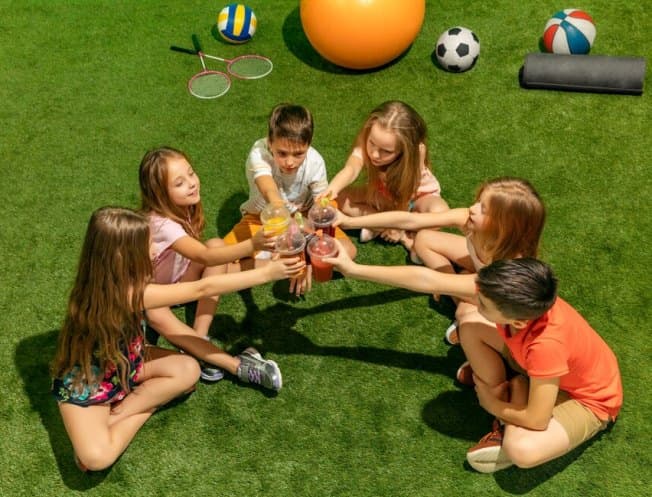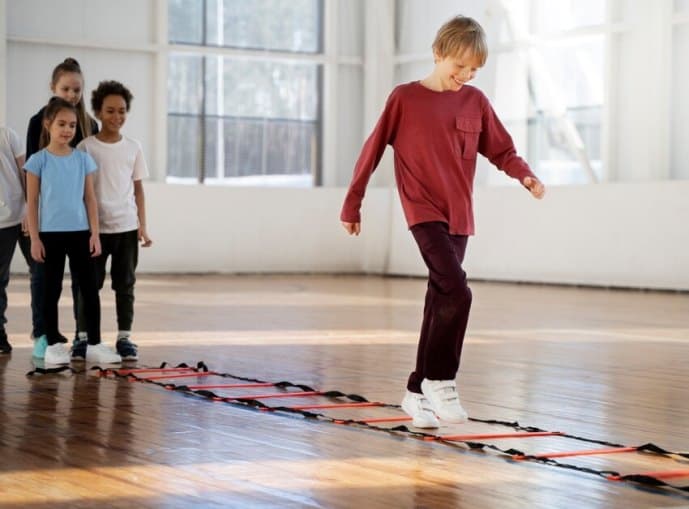Middle schoolers need recess for a multitude of reasons. It plays a pivotal role in their overall development, addressing physical health, social skills, and mental well-being.
Recess also offers them a vital break that fosters better concentration and performance in the classroom. It is a moment to unwind, reduce stress, and return to studies with a sharper focus.
And the above are just a few reasons why middle schoolers should have a recess with a glimpse. As the pressures of adolescence begin to take hold, recess is paramount. In this article, we will be exploring all these reasons and benefits of this seemingly simple yet remarkable activity.

Image Credit: Freepik
Current Middle School Recess Regulations
Here is the current status of recess requirements in the United States:
- National Overview: Across the country, recess is subject to varying regulations. The control of recess typically rests with the school’s administration, particularly the principal.
- Regulations on physical exercise: The extent to which physical exercise is promoted varies from school to school. It is influenced by factors such as available facilities and resources.
- State-by-state variations: Several states have specific regulations for recess, but mostly for Elementary schools. For instance, in Florida, state law mandates at least 20 minutes of daily recess for elementary kids. But no regulations are in place for middle schoolers yet.
- Average recess duration: The duration of recess varies but it typically lasts 15 to 30 minutes. Some middle schools offer it several times a week, while others offer it frequently.
Read Also: How To Make A School Day Go Faster
Why Should Middle Schoolers Have Recess?
As you’ve seen above, so far, there has been no effort to regulate recess for middle schools. Here is why recess should be made mandatory for all schools throughout the US:
1. Cognitive Benefits
The brain is not meant to work continuously for long hours. Just like your muscles, the brain also needs breaks. Well, it provides a valuable intermission during a school day. This allows schoolers to recharge their cognitive battery.
Research supports the idea that recess contributes to cognitive benefits in that it betters memory consolidation. When students engage in unstructured play and physical activity during recess, their brains process and store information effectively.
2. Social Development
During recess, students take part in spontaneous social interactions. These interactions, free from a classroom structure, offer invaluable opportunities for these teens to practice communication, active listening, and empathy.
They also learn how to navigate social hierarchies, forge new friendships, and resolve conflicts. These are skills vital not only during adolescence but also throughout their lives. And they can’t be taught in the classroom.

Image Credit: Freepik
3. Physical Health
Numerous studies conducted by the Centers for Disease Control and Prevention (CDC) consistently highlight the positive correlation between regular physical activity and health.
When students engage in physical activity like running, playing tag, or participating in other physical games, their hearts pump blood quickly. This reduces the risk of heart-related issues in the long run.
And it doesn’t stop there. Engaging muscles also leads to a big muscle mass and bone density. These are essential for teenage growing bodies to reduce the risk of injuries and lay a strong foundation for a healthy future.
Also, one in six kids between the ages of 10 and 17 are obese in the United States. Engaging in recess activities enables them to do physical exercise. This expands the energy accumulated in their bodies, helps maintain weight, and lowers the risk of obesity-related diseases.
4. Stress Reduction
Middle school is a demanding and emotionally turbulent period in the life of a student. The inclusion of a recess serves as an immediate stress relief valve. It allows teenagers to step away from the pressures of the classroom and have a mental or emotional breather.
They also engage in physical activities which trigger the release of endorphins. These are often referred to as “feel-good” hormones and act as natural stress relievers, enhancing mood and reducing anxiety.
5. Enhanced Creativity
When in recess, students have free play and an unstructured environment where they can let their imaginations run wild. There is an absence of strict rules and guidelines.
So, they have all the opportunity to invent games, explore their interests, and collaborate with peers in creative ways. This unbridled freedom encourages out-of-the-box thinking.
6. Improved Classroom Behavior
There is a strong connection between recess and improved classroom behavior. Middle schoolers who have regular recess to expend their energy exhibit better behavior and self-regulation in the classroom.
So, how does recess help students focus? Well, the science in this is that the students have released their pent-up energy and restlessness. When they return back from the break, they are more focused and ready for learning.
7. Academic Achievement
Contrary to the notion that recess detracts from learning time, it actually correlates with academic achievement. The International Journal of Environmental Research and Public Health published research highlighting that students who had regular physical activity performed better academically.
Check Also: Negative Effects of Reward Systems in Classrooms
Reasons Opponents Give Against Middle School Recess
A recess in middle schools is not without opponents. Critics cite the following reasons:
- Academic time: Opponents argue that time spent on recess could be better utilized for academic instruction. They see that redirecting recess time to the classroom as a way to enhance performance. But as many researches show, recess actually boosts performance.
- Disruption: Critics say recess leads to classroom disruptions. When students come back, they will be more energetic and less focused due to the disruptions during the transition. But as we have seen above, even muscles need a break, and so does the brain.
- Safety concerns: There are concerns about accidents happening on the playground. However, they are a minor occurrence. Also, each accident teaches the teenagers a lesson not to repeat the action.
- Space and facilities: Opponents cite that there is limited space and inadequate playground facilities. Hence, recess should be eliminated. They also say that this will save land for buildings since schools won’t need playgrounds.
However, this is not entirely true. Most schools have big parcels of land and do not mind allocating a few square meters to a playground.
- Weather conditions: Those against recess say that adverse weather conditions like sun and snow make outdoor recess unpleasant and dangerous. But there are indoor alternatives that could be suitable in harsh conditions for students to enjoy this break.
- Discrediting scientific research: There is a study published by the National Center for Biotechnology Information (NCBI) that shows classroom breaks have no significant benefits.
The research had results that do not directly point to recess having any positive incomes. However, the researchers say that their study was limited to a small number of heterogeneous students. Hence, it might not be entirely correct.
Conclusion
So there you have it: the reasons why middle schoolers should have recess. This break promotes their mental well-being and physical well-being. The two lead to a lot of advantages, including better focus, academic achievement, less stress, enhanced creativity, and so on.
Opponents of recess have various points against recess, like weather conditions, safety concerns, and many others. However, most of their reasons are baseless and discredited. Hence, middle schoolers should definitely have recess.


